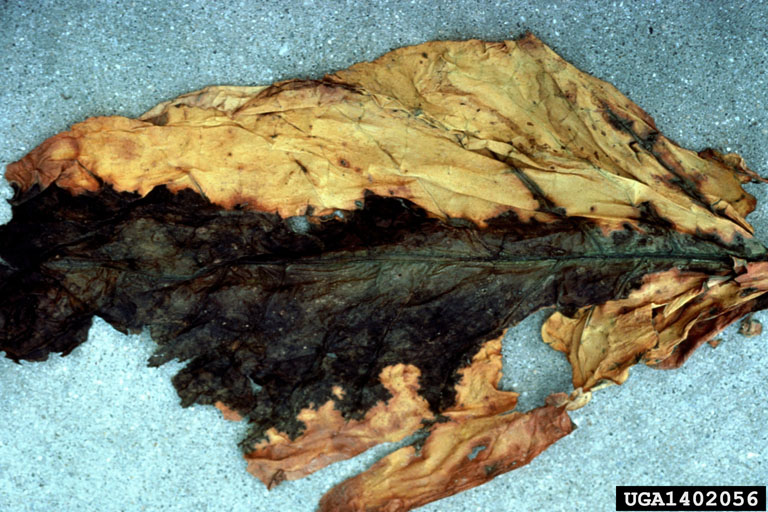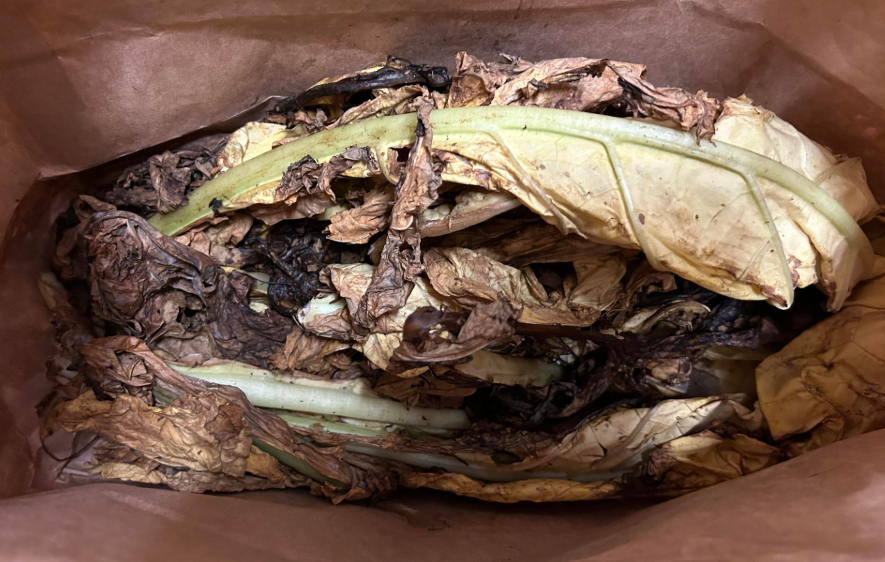Managing Tobacco Barn Rots
go.ncsu.edu/readext?1094527
en Español / em Português
El inglés es el idioma de control de esta página. En la medida en que haya algún conflicto entre la traducción al inglés y la traducción, el inglés prevalece.
Al hacer clic en el enlace de traducción se activa un servicio de traducción gratuito para convertir la página al español. Al igual que con cualquier traducción por Internet, la conversión no es sensible al contexto y puede que no traduzca el texto en su significado original. NC State Extension no garantiza la exactitud del texto traducido. Por favor, tenga en cuenta que algunas aplicaciones y/o servicios pueden no funcionar como se espera cuando se traducen.
Português
Inglês é o idioma de controle desta página. Na medida que haja algum conflito entre o texto original em Inglês e a tradução, o Inglês prevalece.
Ao clicar no link de tradução, um serviço gratuito de tradução será ativado para converter a página para o Português. Como em qualquer tradução pela internet, a conversão não é sensivel ao contexto e pode não ocorrer a tradução para o significado orginal. O serviço de Extensão da Carolina do Norte (NC State Extension) não garante a exatidão do texto traduzido. Por favor, observe que algumas funções ou serviços podem não funcionar como esperado após a tradução.
English
English is the controlling language of this page. To the extent there is any conflict between the English text and the translation, English controls.
Clicking on the translation link activates a free translation service to convert the page to Spanish. As with any Internet translation, the conversion is not context-sensitive and may not translate the text to its original meaning. NC State Extension does not guarantee the accuracy of the translated text. Please note that some applications and/or services may not function as expected when translated.
Collapse ▲Tobacco Barn Rots
Barn rot is a common issue in flue-cured tobacco and can cause major losses during curing. Affected leaves blacken, break down quickly, and do not cure properly. The disease can be caused by either bacteria or fungi, both of which thrive under warm, humid conditions. Decay usually appears on infested leaves during the initial yellowing phase of curing, when humidity is high and temperatures are around 30–35 °C (86–95 °F). Both bacteria and fungi are inactivated once curing progresses to higher temperatures.
Bacterial Barn Rot (Figure 1)
- Caused mainly by Pectobacterium spp., the same pathogen responsible for soft rot in the greenhouse and hollow stalk in the field.
- Rot often begins at the midrib and spreads into the lamina, causing soft, watery rot of the leaf tissue.
- Bacterial pathogens can grow up to 37 °C (98.6 °F).
Fungal Barn Rot (Figures 2–3)
- Caused by fungi such as Rhizopus, Mucor, and Aspergillus species.
- Rhizopus and Mucor form fluffy white growth with black-tipped sporangia.
- Aspergillus may cause colorful, powdery molds.
- Other fungi, including Alternaria, Phoma, and Cercospora, may also contribute and can produce dark spores.
- Fungal pathogens can grow up to 45 °C (113 °F).

Figure 1. Bacterial barn rot

Figure 2. Fungal barn rot

Figure 3. Fungal barn rot
Contributing Factors
- Harvesting and curing wet leaves.
- High humidity in barns.
- Warm conditions (up to 37 °C / 98.6 °F for bacteria; up to 45 °C / 113 °F for fungi).
- Wounds from topping, suckering, or mechanical harvesters.
- Overpacking barns and poor airflow.
- Infected field leaves with brown spots or other diseases carried into curing.
Management
- Harvest only when leaves are dry; avoid injury and rough handling.
- If wet leaves must be harvested, use fans for the first 24 hours at room temperature before yellowing.
- Separate hollow stalk-affected plants before curing.
- Maintain good ventilation and avoid overpacking barns.
- Disinfect tools and equipment with 10% bleach or 2% Virkon® S. Keep surfaces wet for at least one minute, then rinse with clean water.


